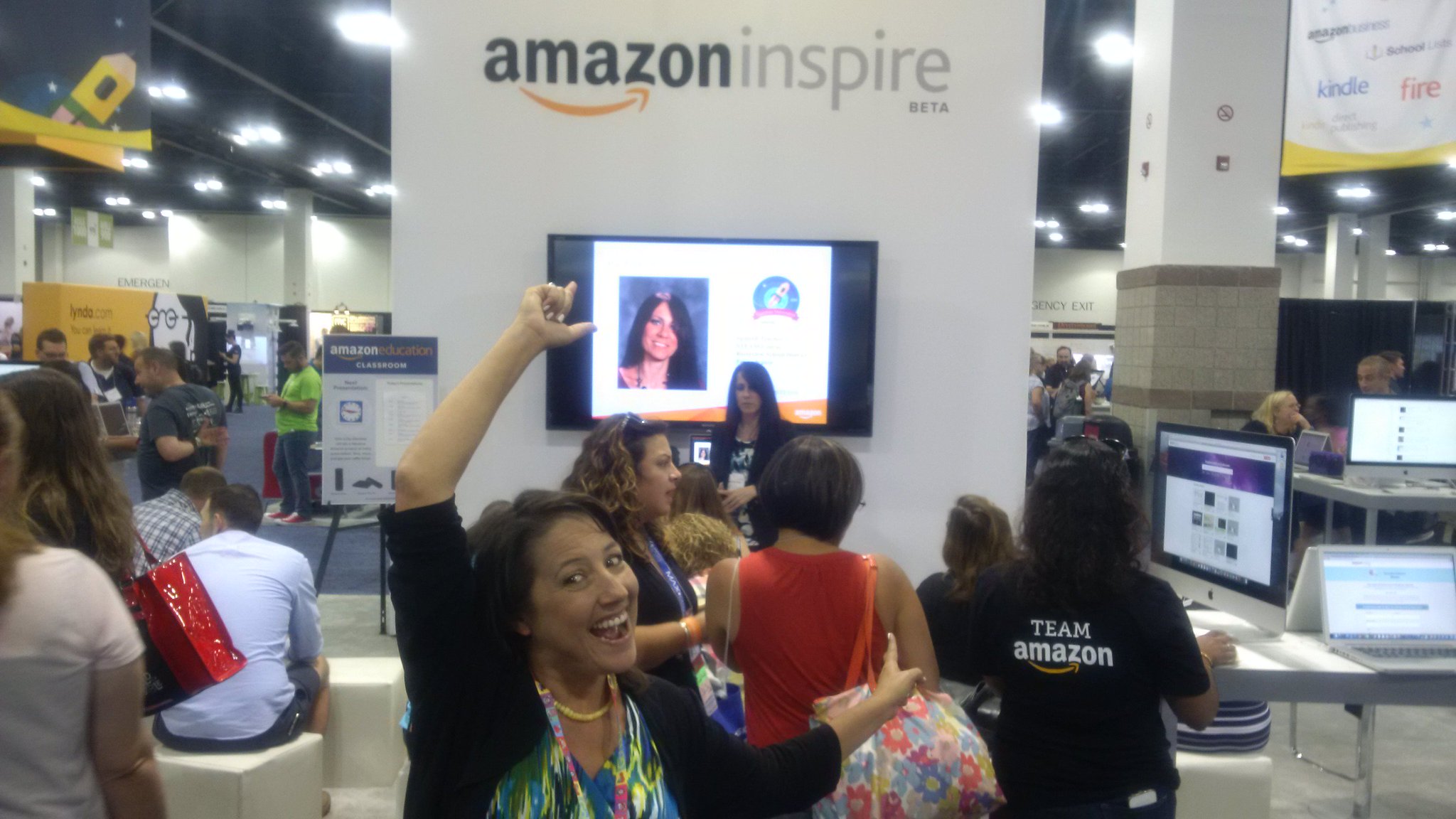 |
| Lisa Nielsen in front of the Amazon Inspire booth at ISTE |
If you’re attending the International Society for Technology
Education (ISTE) conference, you'll want to be prepared. Here are a few go-to articles and a few takeaways that will help you get the most out of this,
or any learning activity, this summer.
Angela Maiers reminds us that what’s more
important than what it is you plan “to do” is who you want “to be”
at ISTE. She tells us to be...
·
prepared
·
rememberable
·
tactically serendipitous
·
reflective
·
a sharer
·
a question asker
·
courageous
·
kind
·
a learner
·
patient
·
persistent
What I like the most in her advice is to be
rememberable.
She says:
Each time you introduce
yourself, you are not just handing them your business card; you are telling
them your story. Your introduction is what can make or break a great first
impression, so your story
needs to be brief, bold, and “rememberable.” Leave them wanting to know
more. The key is to stand out for the right reasons; your strengths, your
unique talents, and perspectives.
We should all consider our
introduction.
For this ISTE, I think mine
will be this:
I am working to ensure staff in
NYC schools know how to develop content that is inclusive of everyone,
including the world’s largest minority group: Those with disabilities, as well
as people who speak all languages. Where I work 50% of families speak a
language other than English at home.
What will yours be?
This post has helpful tips such
as, attend with intention and work the line after keynotes. My favorite piece
of advice is a tip about business cards Select four intentions or goals i.e. 1)
Accessibility experts 2) Those who use ISTE standards 3) Twitter chat
moderators 4) Podcasters.
Once you’ve selected the four
intentions, have each corner represent an intention. Then after you meet the
person, fold the appropriate corner. It is possible to have none or all corners
folded. This will give you a quick way to visually see and sort your cards. You
should also consider writing a quick note on the back with anything that is
important to remember or follow up actions.
The article points out that 1967 was the year
educational computing was born. It was the year Alan Kay gave birth to the concept of a ‘laptop’ computer
for kids, which he sketched on a flight back to the US after working with Jean
Piaget, Seymour Papert, and some young students. In 1967, Kay wasn’t
simply thinking of his ‘laptop’ as a new medium of expression, or way of doing
things more efficiently. Rather he saw it as a place where young people could
create and explore new, powerful ideas. Where they could do things that were
simply not previously possible, at levels of complexity never before
imaginable. As an instrument whose music is ideas.
The article challenges ISTE attendees to find
more examples of what Kay envisioned and focus less on things like monitoring
students, using tech to test prep or deliver instruction.
What to expect at ISTE19
Get advice directly from ISTE. Highlights from this article are:- Have learning goals
- Use the right hashtag #ISTE19 and handle @ISTE
- Dress for comfort (lots of walking) and sometimes cold rooms (bring a sweater)
Your turn
These are some of the
tips and pieces of advice I like to keep in mind before attending summer
learning events like ISTE. What do you think? Are there ideas that resonate
with you? Anything missing?

No comments:
Post a Comment